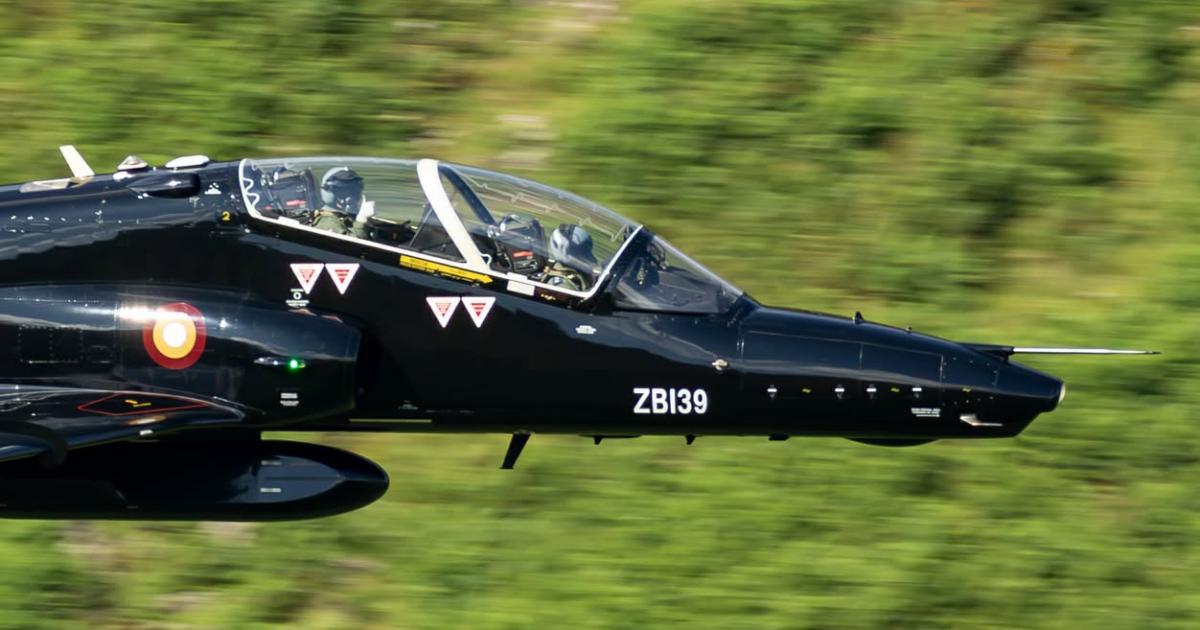With steep valleys and scenic backdrops, you will often see training flights by RAF and USAF jets, it offers unique opportunities for military aviation photography.
One such photographer is Aaron Christie, who began photographing jets seriously in August 2022, after witnessing an “eight-ship” of F-15s fly low over Windermere during a walk at Claife Heights.
Aaron is one of the many photographers who capture military aircraft (Image: Aaron Christie) He said: “I already had a passion for photography before then – picking up my first camera when I was around 8 years old.
“I mainly shot wildlife and landscape photography, however the adrenaline I gained from just seeing the jets fly past made me say to myself ‘yeah I want to do that when I’m older’ and more importantly made me do some research into military aviation and how I can properly get into it as another aspect of photography.”
While other locations like the Mach Loop in Snowdonia are popular for low-level flying, Aaron points out that the Lake District offers more diverse scenery and fewer crowds.
This means photographers can capture more unique compositions, such as jets flying over water at places like Thirlmere or Ullswater.
A standard day for Aaron starts early, usually with a hill climb to be in position by 8:30am. Spring and summer shoots last until around 4:30pm, while shorter daylight in winter means finishing earlier.
Aaron usually plays his days ‘by ear’ (Image: Aaron Christie) He said: “As for camera gear – I use my trusty Canon 7D Mark II paired with my Canon 100-400mm f/4.5-5.6L Mark II, which is relatively a good, reliable setup and it tends to be all I need for low level.
“Many people use the Sigma 150-600mm lenses for more reach however for the majority of the spots I go to, and the sharpness of the 100-400mm Mark II, I find it is perfect lens for me.
“The most difficult part I find is the lighting (other than climbing up steep hills haha!).
“Being sat in a certain spot for the whole day, the light is constantly changing as the sun moves round and the weather shifts.”
According to Aaron, part of the attraction lies in the combination of technical skill, patience, and the shared experience with others.
He also mentions that military crews sometimes recognise photographers on the hills, and some even reach out via Facebook groups to request photos after their flights.
Pilots sometimes get in touch for photos (Image: Aaron Christie) He said: “I have had a few times when pilots have contacted me asking for photos through Facebook.
“I upload a lot of my images to certain Facebook groups such as ‘Cumbria LFA17 spotters’ and airbase groups where the aircraft have taken off from – pilots tend to browse those groups if they wouldn’t mind having photos for a special occasion, or maybe even if they liked the picture.”
One day stands out clearly in Aaron’s memory, March 18, 2025, when he and others captured a four-ship of RAF Typhoons flying low through Dunmail Raise—something not seen since 2022.
He said: “I got a shot of all four in one frame, and later that day, we caught three F-35A jets from the 493rd Fighter Squadron at Lakenheath. That’s my favourite squadron, so it was pretty special.”
Aaron’s favourite shot (Image: Aaron Christie) He’s also photographed a KC-135 Stratotanker low-level and even captured a USAF pilot’s final UK flight.
Aaron offered some advice for beginners, he suggests starting with an affordable DSLR such as the Canon 2000D or Nikon D7200, and a lens with at least 300mm reach.
Joining online communities such as ‘Cumbria LFA17 Spotters’ is a good way to stay updated on flight activity, share photos, and get advice.
He said: “Aircraft usually fly Monday to Friday, excluding bank holidays. It’s crucial to check the weather and come prepared—there are no facilities on the hills.”
Useful tools include tracking websites like ADS-B Exchange, though many low-level aircraft won’t appear on live trackers due to operational security.
You can check out Aaron’s work on his Instagram: aaronchristiephotography.
